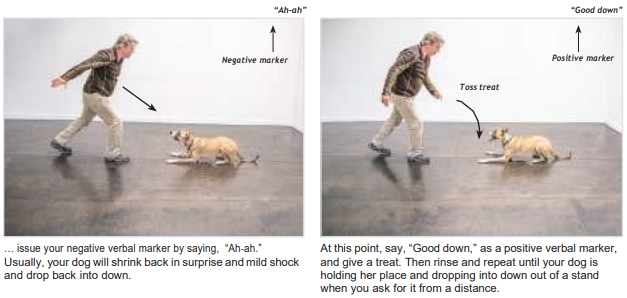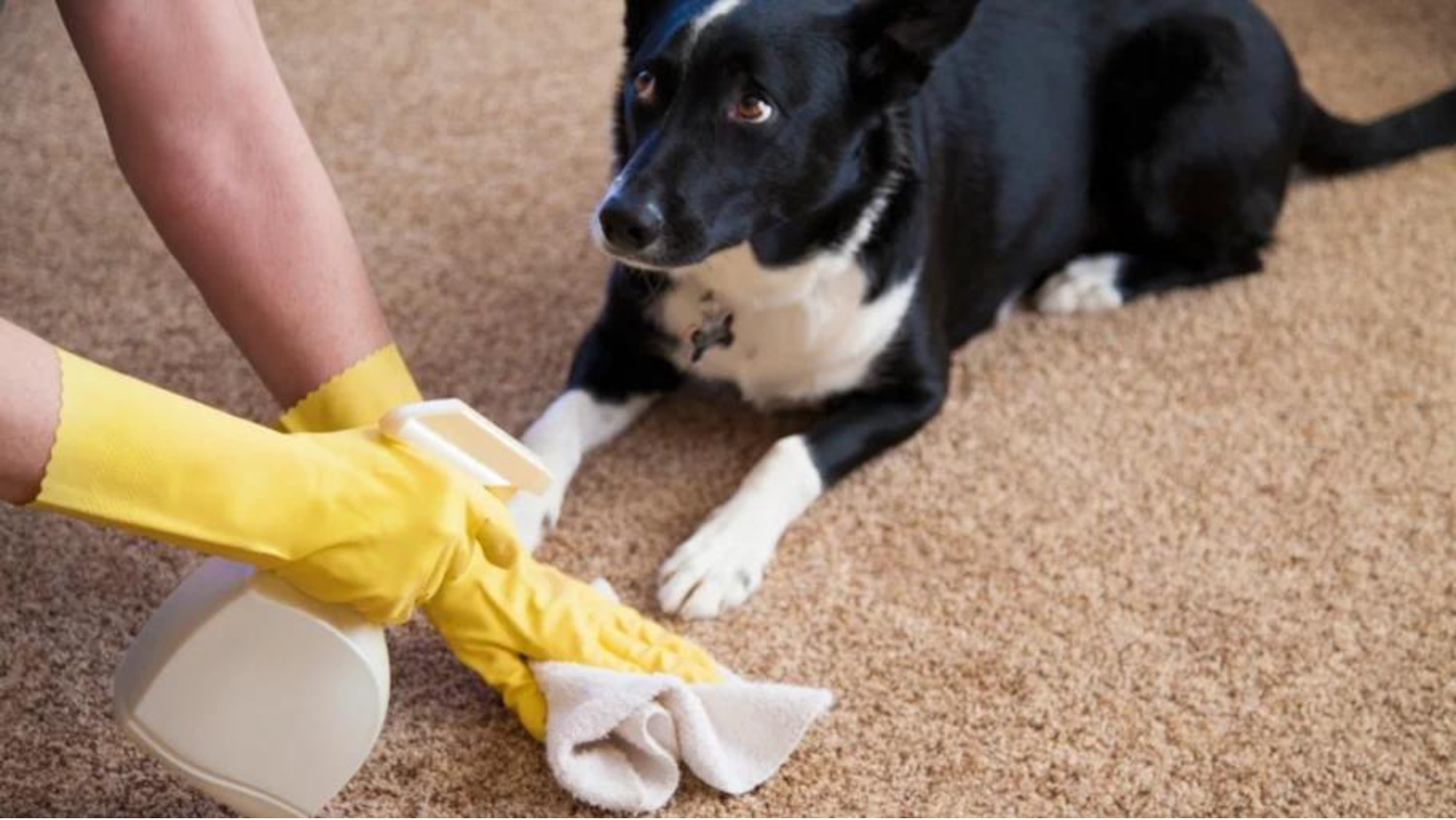Adding Distance- Dog Training
In the same way that going from sit to down without bending over can present a short-term challenge, so can going
from sit into a down if there’s any distance between you and your dog. Even though it’s exactly the same exercise, for
some reason being two feet away can completely throw a dog off. So we sometimes have to slow down and gradually
introduce the notion that “down” still means “down” even though we’re five feet away.
Also, if your dog has trouble as you increase the distance, cut the increments in half and try again. Take your
time with this. Progress might seem halting in the beginning, but your dog will soon figure it out.
Sit to Down

With your dog in sit, hold treats behind
your back in your opposite hand, then use
your signal hand to indicate down and say,
“Down,” as usual.

When your dog is down, say, “Good down,”
as your positive marker …
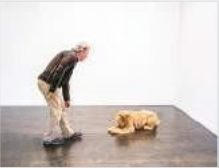
… and then toss a treat between your dog’s
feet from your opposite hand.

Reset your dog into sit, and repeat this
routine a number of times, until your dog’s
got it.
Note
In this exercise, you use your positive marker (“Good down”) to let your dog know when she’s hit precisely the right spot, and then you reward her with a tossed treat a moment later. The positive marker builds a bridge in your dog’s mind between the proper behavior and the reward, allowing you to reward her a moment after she’s actually performed.

Then move a foot or two farther away and repeat the
exercise.
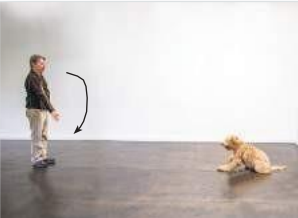
Use the hand signal and say, “Down,” and wait until your
dog is down.
As soon as she’s performed, say, “Good down,” and immediately take a very long step toward her and toss the treat between her feet. Then continue this process: Repeat the exercise at one distance, and then add a little more for the next round, until your dog is successful when you’re at least five or six feet away.
On Hyperspecificity
Some years ago, while researching another book, I ran across Temple Grandin’s book Animals in Translation. It’s a fascinating read for many reasons. But one thing that got my attention was her description of Australian cattle dogs on working ranches in Australia.
These dogs had no problem relating to a man on a horse, since they’d seen “horsemen” daily since their first moments alive. However, in many cases, these same dogs needed to be systematically socialized to a man who was not on a horse, even if it was the same man. That’s because dogs have a hard time generalizing from specifics to entire categories. So a man on a horse is one thing and a man not on a horse is another, and Australian cattle dogs needed some extra work to make the connection. That’s precisely what I think is going on when dogs get confused about the down command the first time it’s given at a distance. Of course, they can be taught that “down” means “down” no matter how far away a person is, but it takes a little extra work.
Stand to Down
Teaching stand to down at a distance is essentially the same as sit to down. Simply repeat the sequence at ever-increasing distances, and if your dog has trouble with a certain new increment, cut it in half and try again. However, for this exercise, you and your dog need to be familiar with stand-stay. Please don’t overlook this exercise, as it sets the stage for emergency stops and distance downs. It’s also extremely handy for grooming and examination.
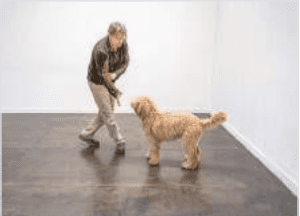
Using a treat, lure your dog into stand.

Then say, “Stay,” and put some distance between you

Be sure to have your treat in the opposite
hand, held behind the back or off to the side.
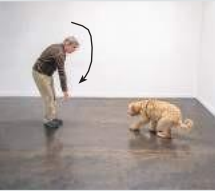
Give the down hand signal and say, “Down.”
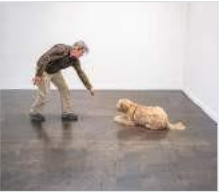
When your dog is down, say, “Good down,”
then step forward and deliver your treat
into the area between your dog’s feet. Then
repeat this sequence, continuing to add
distance in small increments with each
repetition.
If Your Dog Moves Forward while Adding Distance
Sometimes when working on stand to down at a distance, your dog will move forward toward you rather
than hold a stand-stay. This is natural; she’s used to doing downs and receiving treats near you. Here’s how to
correct this issue. This exercise involves two techniques you haven’t used so far: a body block, and a negative verbal marker. Review these before you begin.

